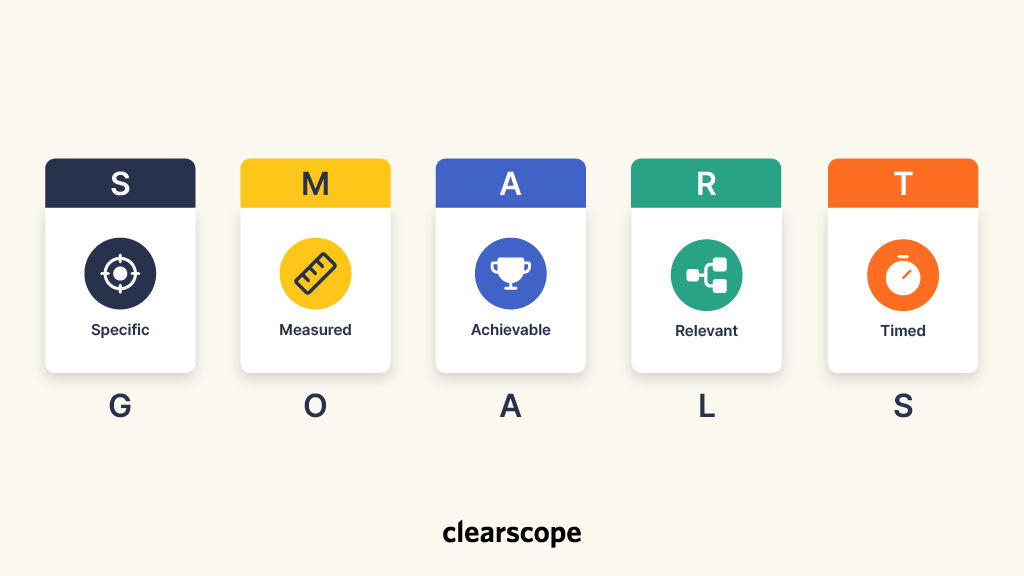
Table of Contents
Join our newsletter
Get access to trusted SEO education from the industry's best and brightest.
There’s nothing quite like the feeling of publishing an amazing post and seeing it rise in Google’s search results.
While search engine optimization (SEO) often takes some time to get rolling, its snowball effect makes it an excellent channel for reaching new audiences and building brand awareness. But watching those organic traffic numbers start to climb is only half the equation.
Ultimately, you don’t just want readers. You want customers.
The good news is that your content can help you with that, too — if you do it right. Learning to include conversion-oriented writing in your SEO content marketing strategy is the key to turning those page views into purchases.
So, how do you create content that converts? Let’s take a look.
What is content that converts?
Conversion-oriented content refers to compelling writing that provides value to your readers while encouraging them to take action. It uses elements like your value proposition, urgency, storytelling, and distraction-free writing to turn leads into subscribers or paying customers.
You can leverage conversion-oriented writing tactics for various types of content, including product pages, landing pages, and blog posts. However, they’re especially effective when used with your SEO content marketing strategy.
According to Growth Bar SEO’s State of Content Marketing and SEO 2022 Report, 91% of business-to-business (B2B) marketers say that SEO is one of their top three digital marketing channels.
Given that organic traffic is one of the lead generation drivers, combining SEO best practices with conversion-oriented writing makes sense.
Combining the two strategies helps increase your top-of-the-funnel (TOFU) leads and improve conversion rates throughout your sales and marketing funnel to grow your business.
Before you begin: Set specific content goals
SEO content marketing is an excellent way to reach new audiences, grow brand awareness, and establish yourself as an authority within your industry. But your end goal isn’t just increased page views (unless you sell display ads).
Ultimately, the point of building a relationship with your readers is to encourage them to make a purchase and become customers.
You need to set specific conversion goals in addition to your organic traffic objectives when you incorporate conversion-oriented strategies into your content marketing efforts.
Like other objectives, conversion goals should follow the SMART framework, which means they should be:
Specific: Clearly defined
Measurable: Quantifiable
Attainable/aspirational: Represents a reach but is in the realm of reality
Relevant: Aligned with your overall objectives
Timely: Has a defined deadline
Examples of SMART conversion goals include:
Increasing email newsletter subscriptions by 10% in the next six months.
Increasing the sales volume for a new product by 15% in a year.
Growing your customer retention rate by 20% in a year.
If you’re applying conversion tactics to new blog posts, keep in mind that it can take some time for SEO content to bring in new website visitors and potential customers. Given that, it’s best to set longer timelines for your conversion goals, such as six months to one year.
Once you set your goals, it’s time to implement the strategies that will turn your content pieces into conversion-driving tools.

How to create content that converts
Look for high-intent keywords.
Understand what your audience wants.
Clarify your value propositions.
Research the competition.
Fine-tune your headlines.
Identify opportunities to build trust.
Write conversationally.
Leverage storytelling.
Touch on emotions.
Add a specific call to action (CTA).
1. Look for high-intent keywords
Understanding the user intent of your primary keywords is key to writing content that ranks higher on search engine results pages (SERPs). And taking a step back to look at the types of keywords you choose to target will help you increase conversions.
Search keywords can be high or low intent. People use high-intent keywords when they’re more likely to take an action or make a purchase. On the other hand, people use low-intent keywords when they want to learn more but aren’t ready to act yet.

Of the four main types of user intent, commercial and transactional often include more high-intent opportunities.
Commercial intent keywords indicate that the person is searching for information about a purchase. Examples include “iPhone vs. Google Pixel” or “best beginner road bikes.”
Transactional keywords indicate that the searcher is ready to act. They include terms like “buy running shoes” or “coffee tables for sale.”
In contrast, low-intent keywords include terms like “who invented social media” or “tips for better posture.” These may have higher search volumes, but they’re not as likely to result in the kind of traffic that leads to conversions.
By including high-intent keywords in your SEO content marketing strategy, you give yourself more opportunities to put your content in front of the people who are more inclined to take an action, like buying a product or signing up for a newsletter.

2. Understand what your audience wants
If someone asked you to describe your target audience, you might start with demographic information, such as “women of color who have started their own companies” or “millennial couples who are trying to have children.”
While these descriptions are excellent starting points, they don’t give you very much information as to the mindset of your readers, specifically their wants and needs. The better you understand your readers’ wants and needs, the easier it will be to write content pieces that drive conversions because you know exactly what to appeal to.
In particular, you want to think about your target audience groups and get in touch with their emotional needs by asking:
“What are my readers’ aspirations?”
“What are my readers’ biggest pain points?”
“What obstacles are in the way of my readers reaching their aspirations?”
Understanding your readers will help you position your product or service as the solution that helps them achieve their goals or removes obstacles. This way, you’re not just listing features when discussing your brand or product.
Instead, you can take those features and showcase them as relevant benefits to your readers.
Not to mention, readers feel seen and understood when you can relate to their daily obstacles. This helps you build the trust that you need to encourage a conversion.
Depending on your marketing goals, you may have one primary target audience or several groups. Breaking your audience into different personas can help you create more specific and relevant content.
For instance, a B2B software as a service (SaaS) company may have clients in several industries, including ecommerce and online publishers.
The aspirations of a solopreneur ecommerce business owner will look different than that of an online media company, and their daily challenges and stressors look different, too.
Creating personas that include emotional wants and needs can help you tailor each piece of content so your readers feel understood.
3. Clarify your value propositions
Your value proposition is essential to increasing conversions. A value proposition is a clear explanation of how your product (or service) solves a particular problem in a way that’s different from the competition.
You might not include your value proposition in conversion-oriented content, especially if it’s SEO blog posts. But having a clear understanding of it will help you and your copywriters create copy that encourages readers to act.
The general formula for a value proposition is:
[Your brand] helps [your target audience] to [achieve a result/solve a problem] by [description of your product and its unique appeal].
Drafting clear value proposition statements that you share internally helps everyone on your content team answer the question, “Why your brand?”
For example, if you’re a webinar company, you may have a value proposition that goes like:
Our brand helps small businesses and startups to identify and capture more qualified leads by offering webinar solutions that are integrated with social media platforms and automated marketing campaigns.
Let’s say you have different audiences like Airbnb (renters and hosts). In that case, you should have a different value proposition for each one.
4. Research the competition
To create successful SEO content, you want to improve upon what’s already ranking and find ways to make your content unique. That’s why competitive research is just as essential as your customer research.
Use a keyword research or content optimization tool like Clearscope to get an idea of what keywords and topics your competitors include in their pieces. This will give you an idea of where the bar has been set and help you identify opportunities to fill content gaps and add value.
Looking at the top SERPs for high-intent keywords can also give clues as to which types of content best suit the searcher intent. Some keywords may have SERPs with more product and landing pages, while others might be more blog heavy.
5. Fine-tune your headlines
Before you can get a conversion, you still need to get readers to choose your content out of all the other options on the SERPs. One of the ways you can increase your click-through rates is by optimizing your headlines.
Here are a few ways you can alter your headlines to make them more clickable:
Specify your target audience (“5 Computers for Gamers”).
Describe your content format (“Expert Review of the Best Smartphones”).
Tap into emotions (“Everything You Need To Host the Perfect Cocktail Party”).
Use second-person pronouns (“Best Gifts to Buy Your Dad This Father’s Day”).
Use descriptive language (“Best French Press for Delicious Full-Bodied Coffee”).
Along with using the tactics above, you want to write headlines that stand out from the competition. To do this, simply search for your primary keyword, see what’s on the SERPs, and find a unique angle.

6. Identify opportunities to build trust
You need to give potential customers reasons to trust you if you want them to take an action that will further their relationship with your brand.
Content elements that boost your credibility and increase trust with readers include:
Free trials that don’t require payment information
Videos or images of your product in action
Mentions of brands that use your product
Money-back guarantees
Customer testimonials
Links to case studies
Reviews and ratings

Another way to look at trust building is to think about it in terms of risk reduction. In other words, think of all the potential objections or fears your target reader has and address them in your content.
For instance, let’s say that you know your target readers care about data privacy. So, they might be more hesitant to give you their information to subscribe to a newsletter.
You can address this objection by:
Stating that you value customer privacy and protect their data.
Explaining that you don’t sell customer data to third parties.
Highlighting privacy and security certifications.
This accomplishes two crucial things. First, it puts potential customers at ease. And second, it shows that you understand what’s important to them and have similar values.
7. Write conversationally
One of psychologist Dr. Robert Cialdini’s six principles of persuasion is that we’re more likely to be persuaded by someone we like. While this may seem most relevant in a world where sales are made in person, it can be informative for conversion-oriented content, too.
You may not be in the room with your readers, but they’re still using content to get to know you.
Writing overly “salesy” or academic content can be a turnoff to readers. And both styles get in the way of relationship building. In contrast, content that sounds human can be more effective than pieces that sound like they’re coming from a faceless brand.
Your readers want to feel special — that you see them and understand their needs. One of the best ways to do this is to use conversational language and write as if you’re talking to one person.
High-quality content that also feels like it’s coming from a helpful friend or mentor is much more likely to convert than content that’s trying too hard to push a sale.
8. Leverage storytelling
The difference between good content and great content isn’t always about the information you include. Rather, it’s about how you present that information and how well you can capture and hold a reader’s attention.
Using narrative elements can take your writing to the next level. It can help you build a deeper connection with your readers and improve your chances of getting a conversion.
Using storytelling lets your audience go on a journey with you and imagine themselves achieving their goal (ideally with the help of your product).
Impactful storytelling elements to focus on are linear narrative structure, familiar characters, and descriptive imagery.
Writing with narrative structure refers to using established storytelling frameworks that your audience is already familiar with. The classic linear structure includes:
Exposition: Providing context and setting the stage (identifying with the target audience)
Initial incident: The reason for the content (the reader’s problem or aspiration)
Rising action: Implications of the reader’s problem or aspiration
Climax: Your solution
Falling action: Implications of your solution
Resolution: Ultimate results of the solution
Using a linear structure can help with comprehension and readability. This is because you’re presenting the information in a framework that people already understand.
You can create even more context by leveraging familiar characters that give your audience someone to identify with, such as:
The rebel, who does things their own way
The creative, who brings their visions to life
The hero, who’s decisive and delivers results
The ordinary person, who’s just a typical person
It may feel tempting to make your brand or product the hero. But it’s much more effective to let your customer take that role. If you need a character for your brand, the mentor or the wise one puts you in the position to support them on their journey.
Finally, you can use imagery to appeal to your reader’s senses and increase engagement. This is particularly effective when you want to show that you understand your readers’ problems or immerse them in the ultimate result of using your product.
Let’s say you're writing for an audience whose main problem is dealing with poor customer service experiences.
You can dig into the discomfort of the problem by describing what it feels like to call customer service and deal with robots instead of humans or be handed off between different departments.
Painting that picture with words proves to your reader that you understand their frustrations.
9. Touch on emotions
Like most people, your readers probably use a combination of logic and emotion when making decisions. If you don’t appeal to the emotional side in your content, that’s a missed opportunity.
Ultimately, you want to set up your content in a way that makes people feel good about their choice to become a subscriber or buy your product.
In a Harvard Business Review report, brands that altered their messaging to appeal to consumer emotions saw their business double and triple.
The report identified the top 10 high-impact motivating emotional desires and aspirations as:
I want to become the person I want to be.
I want to feel confident about the future.
I want to enjoy a sense of well-being.
I want to feel a sense of belonging.
I want to stand out from the crowd.
I want to protect the environment.
I want to feel a sense of freedom.
I want to feel a sense of thrill.
I want to succeed in life.
I want to feel secure.
As a brand, positioning yourself in a way that helps your readers achieve one of those motivations is an excellent way to improve conversions.
To apply this information to your content, look at your audience persona and user intent research and match it to one of these motivators.
For instance, let’s say someone is searching for “no contract phone service.” You may match that with the desire of “I want to feel a sense of freedom.”
You can also use this list to help you better understand which desires your company or product can help people the most with. Incorporating them over time can also help you create more consistency in your brand.
10. Add a specific call to action (CTA)
The final step to crafting conversion-oriented content is to add a CTA to your piece. You still have to ask for the conversion. And you want to do it in the right way.
Each CTA should be just as relevant and thoughtful as the rest of your piece.
Regarding relevance, think about your audience and determine the appropriate action by considering how far along your readers are in the customer journey or sales funnel.
Remember, relationships take time. Asking someone to marry you on the first date is an aggressive approach, but asking for a second date is just right.
Your marketing funnel works similarly. Let’s say you’re writing a piece meant for TOFU leads. In that case, asking them to learn more or sign up for a newsletter may be more appropriate than asking for a sale.
Once you have the right ask, you want to clarify by removing potential distractions. This means choosing one CTA instead of several for most types of content.
Here are a couple of examples:
Offer a whitepaper or template to grow your email list for email marketing
Ask the reader to schedule a demo
Give away a free trial
Final thoughts: Marketer’s guide — how to create content that converts
When it comes to getting more eyes on your website, SEO is one of the most effective marketing channels you have at your disposal. But you’re missing out if your only goal is to drive more website traffic.
When coupled with conversion-oriented writing, SEO can also serve as a powerful revenue driver that creates real results for your bottom line.
For more information on AI-powered SEO content editing software that enables you to achieve the right balance between writing for search engines and customers, explore Clearscope today.




